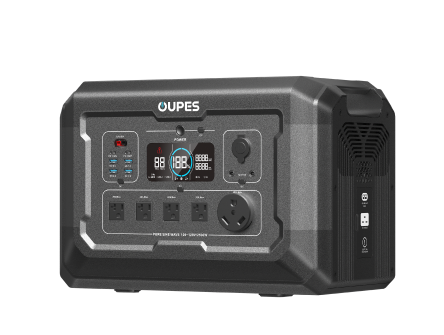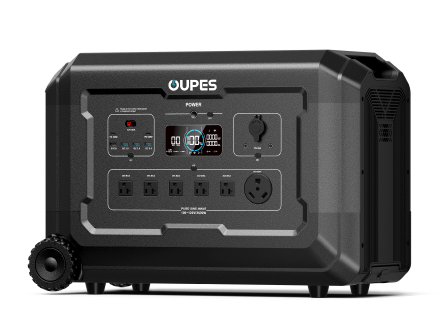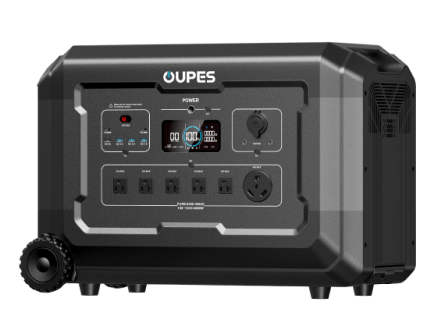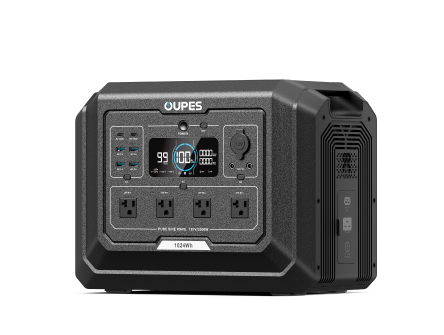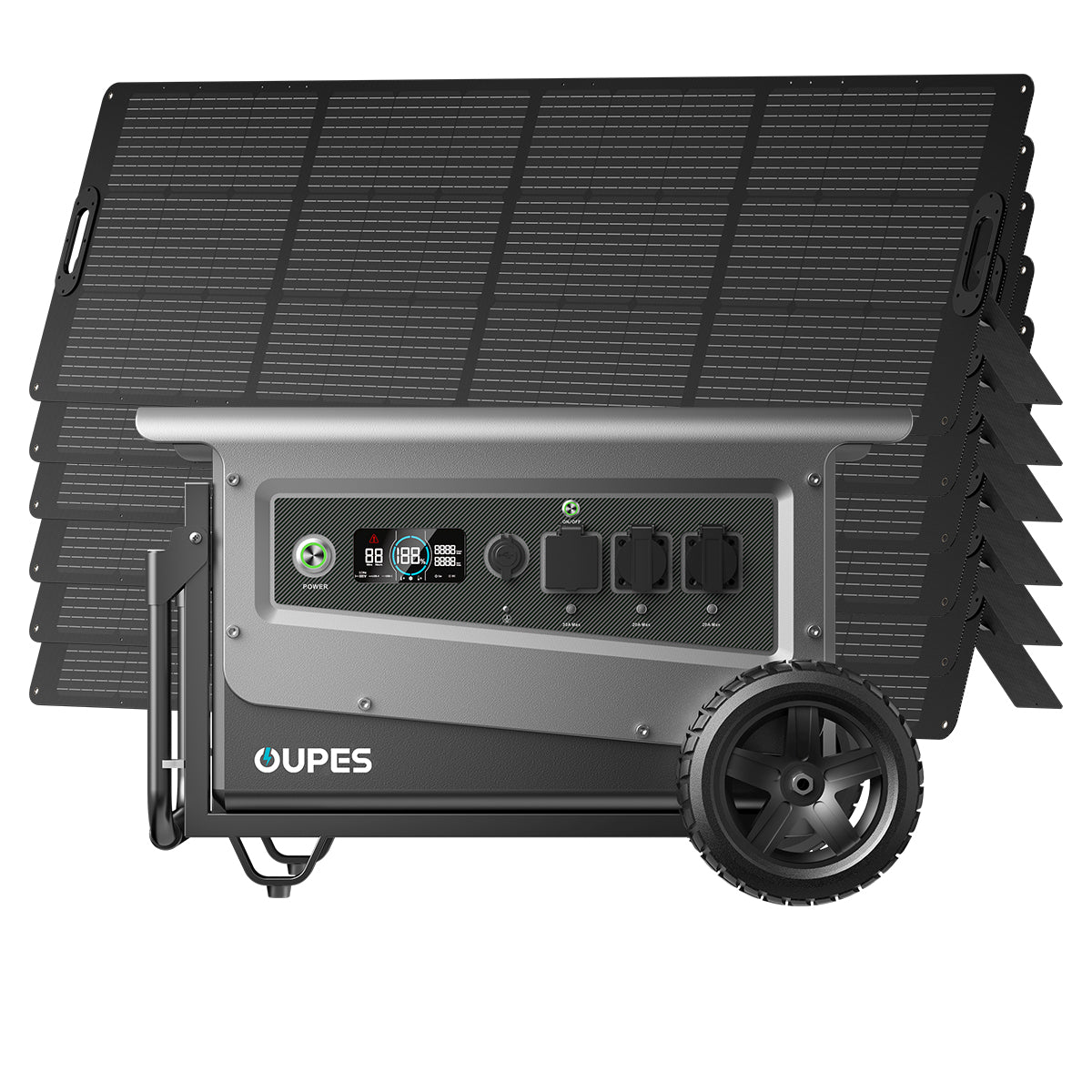
When Hurricane Maria plunged Puerto Rico into darkness, a staggering 3.4 million people discovered their refrigerators, medical devices, and communication systems were only as reliable as the grid powering them. This catastrophic event exposed a fundamental truth: understanding your home's wattage requirements isn't just about calculating energy bills—it's about survival. As climate disasters increase blackout frequency, portable power stations emerge as the modern solution to home energy resilience, transforming sunlight into security during our most vulnerable moments.
Imagine powering your entire home during an outage without the roar of gasoline generators or toxic fumes. Today's solar generators make this possible, but their effectiveness hinges on one critical calculation: how many watts does your household truly consume? From the deceptive startup surge of your refrigerator compressor to the phantom loads draining energy 24/7, we unravel the complex equation of home power needs that could mean the difference between comfort and catastrophe when the grid fails.
Decoding Home Energy Consumption: From Watts to Lifestyle
Calculating a home's wattage demands begins with understanding the three layers of energy consumption: essential loads (refrigeration, medical devices), comfort systems (HVAC, lighting), and discretionary electronics (entertainment, chargers). The average American household requires 10,000-12,000 watts for full operation, but blackout scenarios demand strategic prioritization. Start by auditing appliances using a watt-meter—you'll discover surprising realities like refrigerators consuming 600W during cooling cycles but spiking to 2,200W during compressor startup, or "vampire devices" like game consoles silently drawing 10W even when "off". Modern inverter appliances complicate calculations; a variable-speed HVAC system might draw 1,500W at startup but modulate between 300-800W during operation. Climate dramatically impacts needs: Arizona homes require 40% more summer wattage for AC than heating-dominated Minnesota households in winter. Lifestyle factors matter equally—a home office with multiple monitors adds 300W continuously, while an electric vehicle charger can demand 7,200W alone. This layered approach reveals why neighbor's generator recommendations often fail; your true wattage fingerprint combines appliance specifications, usage patterns, regional climate, and personal priorities into a unique energy profile.
Creating an emergency power hierarchy transforms abstract numbers into actionable strategy. Tier 1 essentials include medical equipment (CPAP machines: 30-60W), refrigeration (600-800W), and communication devices (router: 10W). Tier 2 covers lighting (LED bulbs: 8W each) and cooking (induction burner: 1,500W). Tier 3 encompasses comfort items like window AC units (1,000W) or entertainment systems. During extended outages, water pumps become critical—a well pump can demand 1,000-2,000W with 3x startup surges. Document each appliance's running and starting watts, then multiply running watts by hours used daily. Sum these totals for your minimum daily watt-hour requirement. For example: refrigerator (600W x 8 hours) + LED lights (40W x 5 hours) + CPAP (50W x 8 hours) = 5,400Wh daily. This methodology reveals why gasoline generators often fail—they provide watts but not intelligent management of watt-hours across days. Portable power stations solve this with solar integration, turning finite fuel into renewable resilience.
The Surge Paradox: Why Starting Watts Dictate Your System Size
Motor-driven appliances harbor a hidden energy demand that derails unprepared homeowners: startup surges. These milliseconds-long power spikes—3-7 times higher than running watts—separate functional backup systems from expensive paperweights. When a refrigerator compressor kicks on, it momentarily requires 1,800-2,500W despite normal operation at 600W. Similarly, well pumps (2,000W running, 6,000W surge) and air conditioners (1,500W running, 4,500W surge) create avalanche-like power demands. Traditional generators often falter here because their surge capacity lasts only seconds before voltage drops trip safety cutoffs. This is where advanced portable power stations like OUPES' surge-shield technology shine. Their lithium iron phosphate (LiFePO4) batteries deliver microsecond response to surges, providing up to 12,000W of momentary power—enough to start multiple heavy appliances simultaneously without collapsing the system. Unlike generators relying solely on engine torque, these stations use capacitor banks and smart inverters to "loan" surge energy without depleting main batteries.
Managing surge loads requires strategic sequencing. Never start high-surge appliances simultaneously; stagger activations by 15 seconds. Position power stations close to appliances to prevent voltage drop through extension cords—a 100ft 16-gauge cord can cause 20% voltage loss, increasing amp draw and triggering overloads. For homes with multiple surge risks, modular power stations allow linking units to share startup loads. During California's rolling blackouts, homeowners successfully ran refrigerators and medical devices by connecting two 3,600W stations to handle 7,000W combined surge capacity. Understanding your home's surge profile is critical: list all motor-driven devices, note their locked rotor amps (LRA) or surge watts, then identify which might activate simultaneously. A furnace blower (800W surge) kicking on while refrigerator (2,200W surge) starts could demand 3,000W unexpectedly. Solutions like OUPES' app provide real-time surge monitoring, sending alerts before cascading starts overwhelm capacity. By designing around these electrical avalanches, you prevent the heartbreak of a powered station that can't start your most critical appliances.
Portable Power Stations: Sizing Your Solar Generator Ecosystem
Selecting the right portable power station involves balancing three dimensions: surge capacity for appliance startups, running wattage for sustained operation, and battery capacity measured in watt-hours (Wh). For essential loads during a 24-hour outage, a 2,000Wh unit with 3,000W running/6,000W surge typically supports refrigerator, LED lighting, router, and medical devices. However, multi-day resilience requires solar integration—a 2,000Wh station needs 800-1,200W of solar panels for daily recharge under optimal sunlight. Real-world factors dramatically affect performance: ambient temperatures below 32°F can reduce lithium battery capacity by 30%, while partial shading might cut solar input by 60%. Households in cloudy regions should oversize solar arrays by 40%; Pacific Northwest users might need 1,600W of panels to reliably recharge a 2,000Wh station. The golden ratio: solar panel wattage should equal 60-80% of your station's capacity for single-day recharges. For example, OUPES' 5,120Wh Mega series pairs with four 400W panels, generating 2,000-3,200Wh daily depending on latitude and season.
Expanding coverage requires understanding parallel scalability. Two 2,400W stations linked provide 4,800W running power and 9,600W surge—enough to start central AC units. Battery expansion packs transform systems; adding a 2,000Wh module to a base station creates customized capacity without replacing core components. Smart energy management unlocks efficiency: stations with EPS (Emergency Power Supply) mode provide sub-20ms switchover during grid failure, preventing computer reboots. For whole-home coverage, critical circuits transfer to a sub-panel powered by the station via a manual transfer switch. During Texas' 2023 ice storm, households using 7,000W stations with solar arrays maintained furnaces, refrigerators, and networks for 12 days—impossible with fuel-dependent generators amid gasoline shortages. Always derate manufacturer specs by 15% for conversion losses, and remember: your worst-case scenario wattage (extreme heat/cold increasing HVAC demand) should dictate system sizing, not average conditions.
Solar Integration: From Finite Backup to Infinite Resilience
Transforming portable power stations into self-sustaining ecosystems requires mastering solar mathematics. Panel orientation matters more than raw wattage: a 400W panel tilted at your latitude's optimal angle produces 40% more daily watt-hours than one lying flat. For year-round resilience, calculate winter sun exposure—December production might be 1/3 of June's in northern states. Use the NREL PVWatts calculator to predict location-specific yields. Charge controllers become the unsung heroes; MPPT (Maximum Power Point Tracking) controllers extract 30% more energy than PWM types, especially crucial in low-light conditions. Stations like OUPES' feature integrated MPPT controllers accepting up to 1,500W solar input, converting variable panel output to stable battery charging. Wiring configuration determines efficiency: connecting four 200W panels in series maintains amperage low for long cable runs, while parallel connections minimize voltage drop from shading. Always use 10-gauge solar cables for runs over 30ft to prevent energy loss.
Weatherproof deployment demands strategic planning. During hurricanes, ground-mounted panels risk flooding—roof-mounting with hurricane brackets provides security but complicates emergency access. Portable folding panels offer flexibility; their 20-24% efficiency monocrystalline cells outperform rigid panels when repositioning for sun angles. For indefinite off-grid operation, balance daily consumption against solar input. If your essential loads consume 4,000Wh daily, you'll need 1,500-2,000W of panels in sunny regions or 3,000W in cloudy areas. Incorporate buffer days: three days of autonomy requires triple battery capacity to cover low-sun periods. Smart battery management extends lifespan; LiFePO4 batteries tolerate 3,500+ cycles when kept between 20-80% charge, unlike lead-acid degrading below 50% discharge. During Washington's 2022 snowstorm, households with properly sized solar generators maintained power for 18 days—proving that when paired with intelligent energy budgeting, sunlight becomes the most reliable fuel on Earth.
Energy Optimization Strategies: Doing More With Fewer Watts
Maximizing portable power station efficiency begins with replacing energy hogs with DC-powered alternatives. Swap 1,500W coffee makers for 300W pour-over kettles, replace 1,000W microwaves with 150W induction warmers, and choose 12V RV refrigerators (60W) over residential units (600W). Strategic load scheduling prevents overlapping surges: run washing machines during peak solar production, not at night. Passive thermal management reduces HVAC demands; pre-cooling homes before outages or using thermal curtains can cut AC wattage by 40%. Phantom loads become critical in blackouts—unplug devices not in use since idle electronics can consume 10% of a household's daily wattage. Smart power strips automatically cut vampire power to peripherals when main devices sleep.
Advanced monitoring transforms consumption awareness. Stations with energy tracking apps reveal real-time wattage draw, allowing users to identify unexpected drains—a malfunctioning freezer drawing 1,200W instead of 600W, or a gaming PC left on standby consuming 100W. During California's public safety power shutoffs, households using OUPES' app reduced consumption 35% by scheduling device operation around solar production peaks. Temperature management extends battery life; operating stations in 50-86°F environments prevents capacity loss. For prolonged outages, implement "energy shifts": charge battery banks during daylight, then switch to battery power at dusk. Cooking efficiency offers dramatic savings; pressure cookers use 70% less energy than conventional pots, while air fryers cook faster than conventional ovens. By combining technology swaps with behavioral adjustments, households can maintain 80% of normal function with 50% less wattage—transforming limited power stations into robust lifelines.
Determining your home's wattage needs transcends electrical calculations—it's the foundation of modern resilience. From surge management that prevents system failures to solar integration enabling indefinite operation, portable power stations transform vulnerability into empowered independence. The true metric isn't just watts consumed, but watts intelligently managed through technology and strategy.
As grid instability increases, households that master their energy profile gain more than backup power—they secure continuity of healthcare, communication, and comfort. Portable solar generators represent the convergence of sustainability and security, proving that the most reliable power source isn't buried in power lines, but falls freely from the sky. By sizing systems to your unique needs and optimizing consumption, you transform sunlight from an abstract concept into your home's beating heart when darkness falls.

